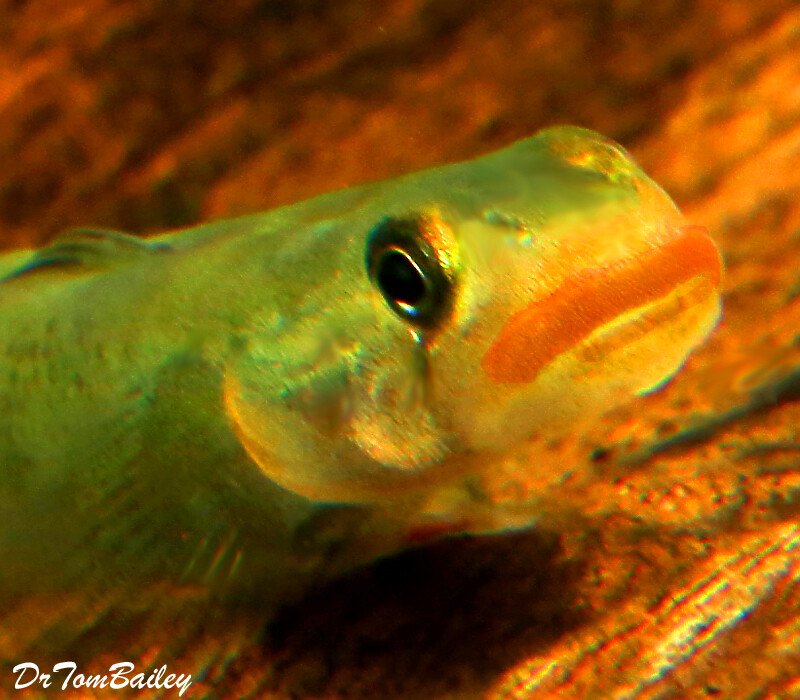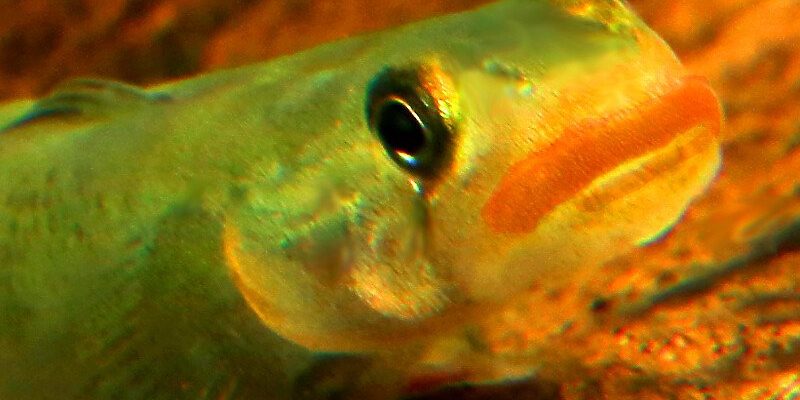
What is a Goby Fish?
Goby fish are fascinating little creatures found in various water bodies worldwide. These fish belong to the family Gobiidae and are known for their small size, vibrant colors, and unique behaviors. You might be surprised to learn that there are over 2,000 species of gobies! They inhabit diverse environments, from freshwater rivers and streams to brackish mangroves and even coral reefs in the ocean.
What makes goby fish particularly interesting is their adaptability. They can live in different salinities and temperatures, which makes them a favorite among aquarists. Imagine a little fish that can thrive in both salty and fresh water—now that’s impressive! Their social behavior is equally compelling; many gobies live in colonies and exhibit symbiotic relationships with other marine creatures, particularly shrimp.
If you’ve ever watched a goby fish, you might notice their distinctive body shape and method of swimming. They tend to have a rounded body and a fused pelvic fin that forms a disc, which they use to cling to surfaces. This adaptation is helpful for staying put in strong currents or among rocky substrates. Gobies are truly remarkable fish that exemplify the beauty and diversity of the aquatic world.
Physical Characteristics of Goby Fish
Goby fish come in a variety of shapes and sizes, but they generally share some common physical characteristics. Most species measure between 2 to 10 inches long, making them relatively small compared to other fish. Their bodies are often elongated and slender, with a large head that holds formidable eyes, giving them a keen ability to spot predators and prey alike.
The color of gobies varies significantly across species. Some shimmer in bold, bright colors that can include brilliant blues, yellows, and reds, while others may opt for more subdued browns and greens that help them blend into their habitats. This beautiful coloration is not just for show; it serves important functions like attracting mates and communicating with other fish.
Another fascinating aspect of goby fish is their unique fin structure. As mentioned, the pelvic fins are fused into a disc-like shape, which provides stability as they navigate their environments. This adaptation allows them to hold onto rocks, coral, or the substrate, making it harder for predators to dislodge them. Their pectoral fins are often larger, aiding in their swimming and maneuverability.
Habitat and Distribution
Goby fish are incredibly versatile and can be found in a wide range of habitats. They thrive in both freshwater and saltwater environments, which speaks volumes about their adaptability. Some species prefer freshwater rivers and streams, while others can be found in estuaries where fresh and saltwater mix. This flexibility allows gobies to occupy diverse ecological niches.
You can find gobies in many parts of the world. From the rocky shores of the Pacific Ocean to the calm lagoons of the Caribbean, these fish have carved out homes in various regions. Some species are more specialized, with others preferring sandy bottoms or coral reefs as their primary habitats. The diversity of environments gobies inhabit helps to explain their vast species variety.
Interestingly, goby fish play essential roles in their ecosystems. In coral reefs, for instance, they often have symbiotic relationships with shrimp, where they share burrows while offering each other protection. This partnership not only highlights the goby’s adaptability but also showcases the intricate balance of aquatic life.
Feeding Habits
Goby fish have diverse diets, depending on their species and habitat. Most gobies are omnivores, which means they eat both plant and animal matter. They typically consume tiny crustaceans, zooplankton, and even algae. Their small size allows them to forage in crevices and among the substrate, picking up morsels that others might overlook.
When gobies hunt for food, they often display a fascinating behavior—darting in and out of hiding places to catch their prey. This quick movement not only helps them snag a meal but also keeps them safe from larger predators. If you think about it, it’s like having a snack while racing home on a bike; you have to be quick and alert!
In an aquarium setting, feeding gobies can be quite straightforward. They usually thrive on high-quality flake foods, pellets designed for bottom feeders, and occasional treats like brine shrimp or finely chopped vegetables. Just like us, they appreciate variety in their meals to keep things interesting.
Reproduction and Life Cycle
The reproductive habits of goby fish are as diverse as their species. Most gobies are known to be egg-layers, with females laying hundreds to thousands of eggs at a time. After spawning, the female often deposits her eggs in sheltered areas, where they are protected until they hatch.
Interestingly, gobies display various courtship behaviors to attract mates. Some species use vivid colors and unique dances to entice potential partners, while others use pheromones to communicate readiness to breed. Once eggs are laid, males frequently guard the nest and fan the eggs with their fins to ensure they receive enough oxygen.
The life cycle of goby fish typically begins with the eggs hatching into larvae, which then float in the water column for a short while before settling to the bottom. As they grow, gobies undergo several stages, gradually transitioning into the adult form. The entire process can vary significantly depending on environmental conditions, leading to fascinating variations in development and survival rates.
Threats and Conservation
Like many aquatic species, goby fish face several threats in their natural habitats. Habitat destruction is one of the most significant challenges they face. Pollution, overfishing, and climate change all contribute to the degradation of aquatic environments, leaving gobies vulnerable. Coral reef destruction, in particular, poses a severe risk since many species rely on these ecosystems for shelter and food.
In addition to habitat loss, invasions by non-native species can disrupt the balance of local ecosystems. Gobies often compete with other fish for resources, and when aggressive exotic species are introduced, native goby populations can decline. It’s similar to having a new neighbor who takes over the park—you quickly realize you don’t have as much space to enjoy!
Conservation efforts are underway in many regions to protect goby fish and their habitats. These initiatives often focus on restoring natural environments, regulating fishing practices, and raising awareness about the importance of these tiny fish. By recognizing their role in the ecosystem and working together, we can help ensure that goby fish continue to thrive for generations to come.
Interesting Facts About Goby Fish
| Species Count: | Over 2,000 |
| Typical Size: | 2 to 10 inches |
| Habitat Types: | Freshwater, saltwater, and brackish environments |
| Diet: | Omnivorous, eating small crustaceans, algae, and zooplankton |
| Reproduction: | Egg-layers, with males often guarding nests |
| Color Variety: | Bright colors to camouflage (e.g., blues, yellows, browns) |
Keeping Goby Fish as Pets
If you’re considering adding goby fish to your aquarium, you’re in for a treat! These little fish can make charming pets and add life to your tank. First off, you’ll want to ensure that your tank mimics their natural habitat. Providing plenty of hiding spots like rocks, caves, and plants will help them feel secure. Just think of it as creating their very own underwater home!
When it comes to water conditions, gobies can be adaptable, but they do best in stable environments. Make sure the water temperature, pH, and salinity levels are suitable for the specific species you choose. Regular water changes and monitoring will keep them healthy and happy.
Feeding your goby fish is also simple. They’ll enjoy a varied diet, so mix high-quality flakes, pellets, and occasional frozen or live food. Be mindful of overfeeding, as gobies can be enthusiastic eaters, leading to water quality issues. Just like us, a balanced diet keeps them thriving!
FAQ
Are goby fish good for beginners?
Absolutely! Goby fish are often recommended for beginner aquarium enthusiasts. Their hardy nature and adaptable requirements allow them to settle into new environments easily. They also have interesting behaviors that can captivate your attention, making them an enjoyable addition to any tank. Just remember to provide a suitable environment and proper care.
Can goby fish live with other species?
Yes, many goby species are social and can live harmoniously with other fish. However, it’s essential to choose tank mates carefully. Avoid aggressive species that might bully gobies. Peaceful community fish that inhabit similar water layers can make excellent companions.
How long do goby fish live?
The lifespan of goby fish can vary depending on the species and their environment. In optimal settings, many gobies can live anywhere from 3 to 5 years, with some even longer. Proper care, including a good diet and suitable water conditions, can help extend their lifespan.
Do goby fish require specific diets?
Goby fish are omnivores, which means they enjoy a variety of foods. High-quality flakes, pellets, and occasional live or frozen treats will keep them healthy. It’s essential to provide a varied diet for optimal health and to mimic their natural feeding habits.
What are the best tank conditions for goby fish?
Goby fish thrive in a well-maintained tank with stable water conditions. Generally, a temperature range of 75 to 82°F (24 to 28°C), a pH of 7.0 to 8.5, and adjusted salinity, depending on species needs, will keep them happy. Just like us, these fish appreciate clean and stable living conditions!
Do goby fish interact with other species?
Many goby fish are known for their social behavior, both with their own species and other fish. They often display fascinating interactions, such as establishing territories or engaging in courtship displays. Their friendly demeanor makes them fun to observe in an aquarium.
Are goby fish endangered?
While not all goby species are endangered, habitat destruction and pollution pose significant threats to specific populations. Some species are at risk due to climate change and invasive species. It’s crucial to support conservation efforts to help protect these remarkable fish.
What makes goby fish unique among other fish?
Goby fish are unique due to their size, adaptability, and social behavior. Many gobies have specialized relationships with other aquatic organisms, like shrimp, which sets them apart from other fish. Their ability to thrive in both freshwater and saltwater adds to their distinctiveness in the aquatic world.
Can I breed goby fish at home?
Breeding goby fish at home can be challenging but rewarding! You’ll need to create a suitable environment that mimics their natural breeding conditions. Providing hiding spots and stable water parameters will support the breeding process. However, be prepared for the potential challenges and ensure you have the resources to care for the fry.
Where can I find goby fish for my aquarium?
You can find goby fish at local pet stores, aquarium specialty shops, or online retailers. Make sure to choose healthy specimens with good coloration and no visible signs of disease. It’s always a good idea to do some research on the specific species you’re interested in to ensure you’re providing the best care possible.
Can I keep multiple species of goby fish together?
Keeping multiple species of goby fish together is possible, but it requires careful planning. Some goby species may compete for territory or resources, so ensuring enough space and hiding spots is essential. Research the species you’re considering to determine compatibility and space requirements.

